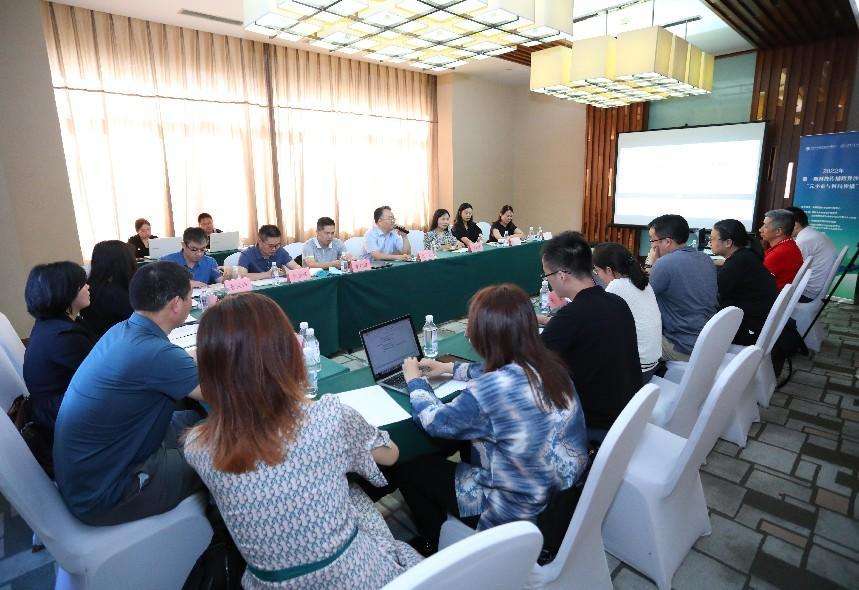Ocean scientists measure the sedimentary material feathers aroused by the deep -sea mining vehicles | Green Club International News
Author:China Green Fair Time:2022.09.25
The copyright belongs to the original author, if there is any infringement, please contact us
What impact will human deep -sea mining behavior affect the ocean? With the increase of people's interest in marine minerals, the impact of deep -sea mining on the ocean has also become an increasingly urgent issue. Recently, the Marine Working Group of China Biological Diversity Protection and Green Development Foundation (referred to as the China Green Fair and Green Club) learned about a study of the sedimentary feathers aroused by scientists measured by scientists. Reader reference.

The deep sea bed of the ocean is scattered with ancient, potato -sized rocks called "multi -metal tuberculosis". These rocks contain nickel and cobalt. These minerals are demanding in manufacturing batteries. Renewable energy and the acceleration of urbanization. The deep sea contains a large amount of tuberculosis containing minerals, but the impact of deep -sea mining is neither known and great controversy.
The marine scientists of the Massachusetts Institute of Technology made some explanations of this theme. They studied the stirring sediment when collecting tuberculosis from the underground and published it in "Scientific Progress".
The research report reported the results of the Pacific Crarine Cleper (CCZ) cruise research in 2021, where there were a large number of multi-metal tuberculosis. Researchers are equipped with instruments for a prefabricated deep -sea mining collector to monitor the sedimentary feathers at the seawater flow of 4,500 meters under the sea.
The measurement results show that the deep -sea mining collector produces dense sediments at the tail and spreads under its own weight. This phenomenon is called "turbid flow" in fluid mechanics. When it gradually spreads, the feather flow is still relatively low, staying within the range of 2 meters from the bottom of the sea, instead of rising to the water column immediately as people speculate.
Thomas Peacock, a co -author of the Research Report and a professor of mechanical engineering at the Massachusetts Institute of Technology, said: "Compared with some conjectures, these feathers are very different. Considering these processes we have determined to evaluate its scope. "
Deep -sea exercise
In order to collect multi -metal tuberculosis, some mining companies have proposed to deploy vehicles with tractors to the bottom of the sea. These vehicles will take away tuberculosis and some sediments along the way. Then, the tuberculosis and the sediment will be separated in the car, and the tuberculosis is sent to the water surface vessel through a riser, and most of the sediments will be discharged behind the car.
Pickek and his group have previously studied the dynamics of the stream of streams that may be pulled back to the ocean. In their current research, they focus on the sediments produced by the collector themselves.
In April 2021, the research team joined a Belgian expedition to explore the method of extracting metal -rich tuberculosis. The Belgian expedition test the tuberculosis collection performance of the collector vehicle, and the research team monitored the sediments generated in the tail flow of the vehicle.
The vehicle starts with a straight line, and all the suction systems are opened. Researchers let the vehicle drive 100 meters to collect all tuberculosis on its path. They then instructed the vehicle to turn off their inhalation system and bypassing it to pass through the sediments it just manufactured. The sensor installed on the collector measures the concentration of the sediment, enabling scientists to monitor it within a few minutes of the collector stirring the sedimentary feather flow.
Researchers also placed a moisture device equipped with sensors from 50 to 100 meters from the collector planned orbit. The collector drove along the route of collecting tuberculosis and generated the sedimentary feather flow, and finally spread to the moving point after one or two hours. This operation enables the research team to monitor sediments within a few hours of time and capture the evolution of sediments.
In the multiple operations of the vehicle, Pickk and his team can measure and track the evolution of the sediments generated by the deep -sea mining vehicles.
The team observed that the collector vehicle stirred a large amount of sediments. The density of these sediments was very large. Even after mixing with the surrounding water, the feather flow it produced was almost manifested as an independent fluid. At its own weight, its own weight The proliferation is the so -called turbidity flow.
For the original text: https://phys.org/news/2022-09-oven-scientist-sediment- plume-deep--ill mining.html
Compilation: SARA
Review: daisy
Edit: Pierre
- END -
Experts explore "Yuan Universe and Science and Technology Communication"

Recently, the 2022 science and technology communication cross -border salon hosted...
We look up at the starry sky tonight!

Poster production: Feng JuanA different Jupiter Yueyue Xiang will be staged on Sep...